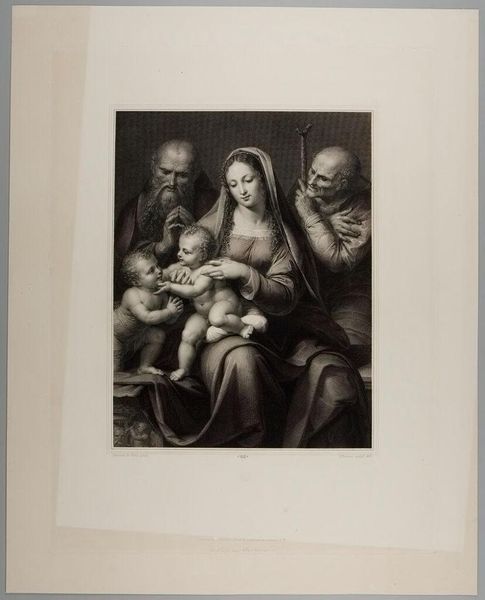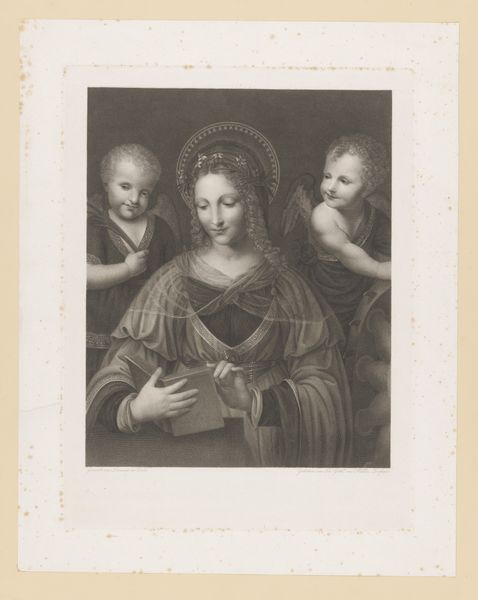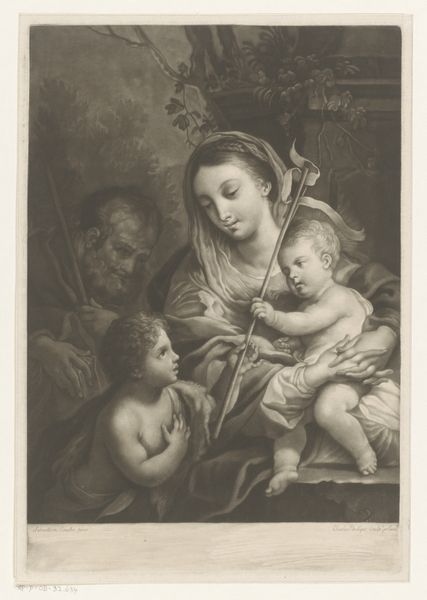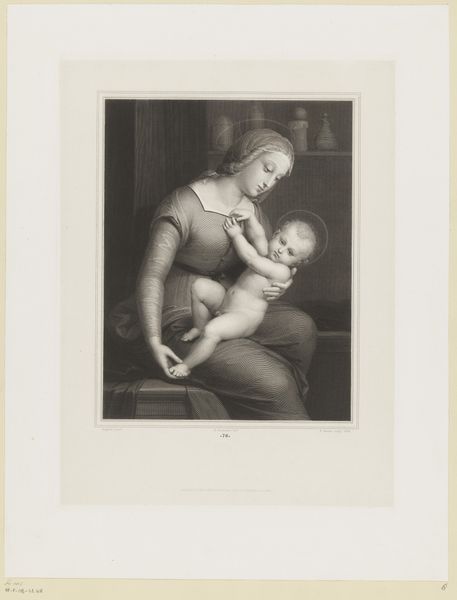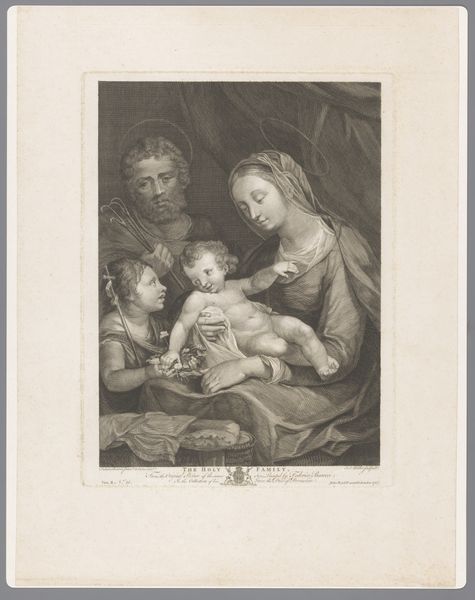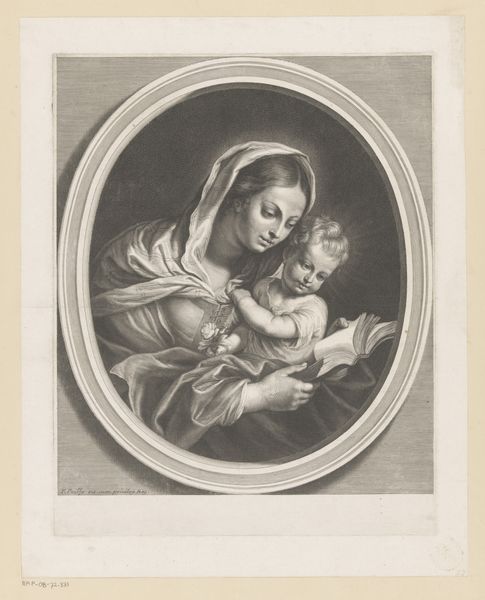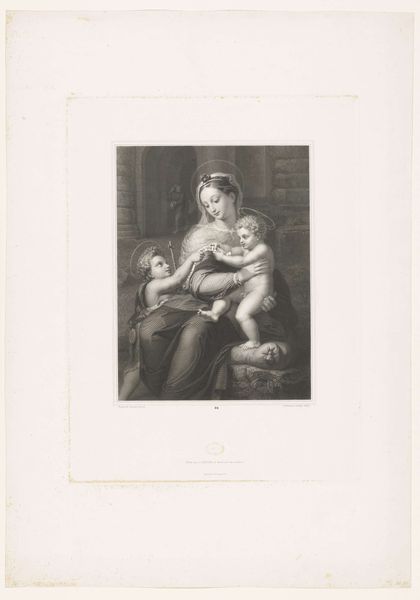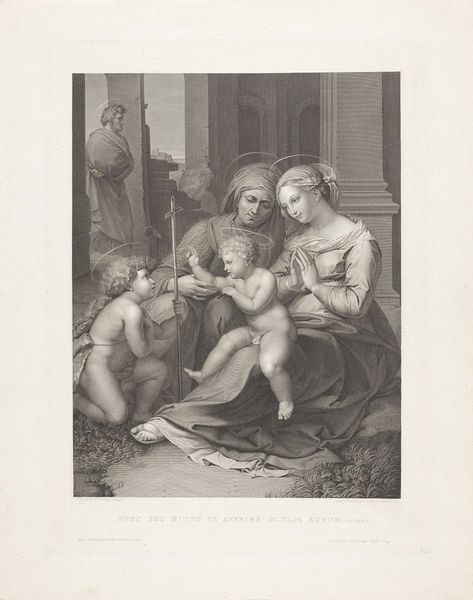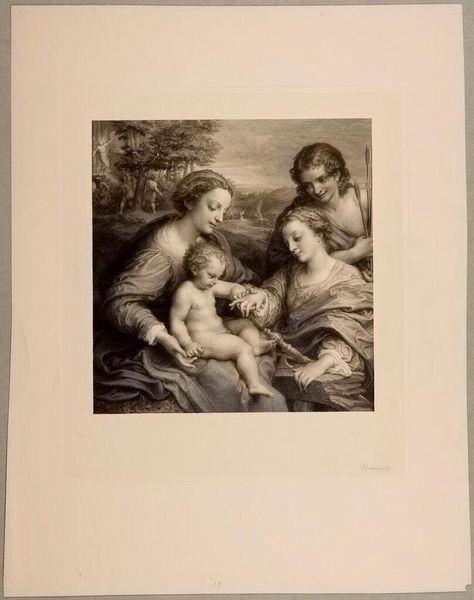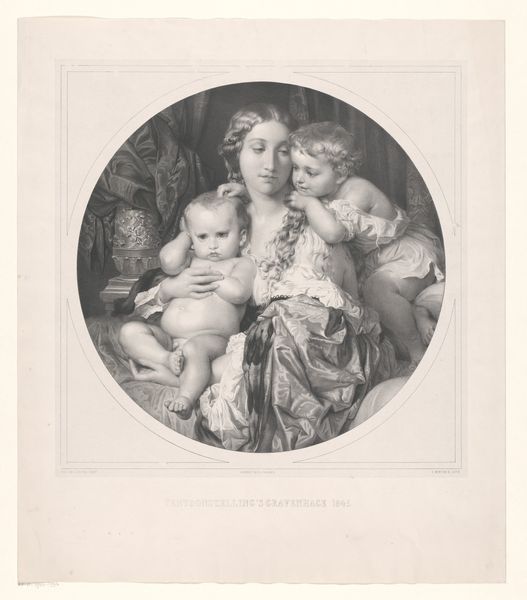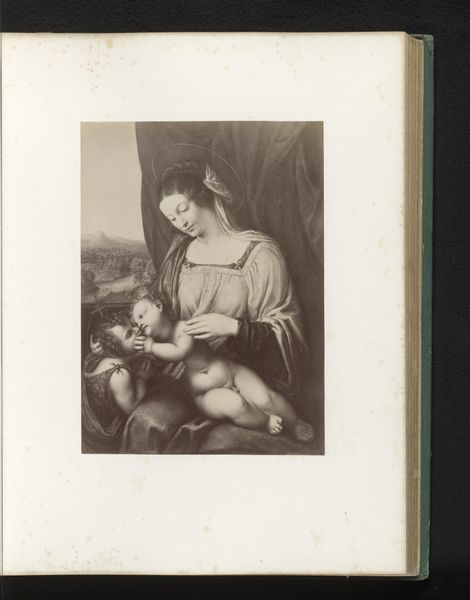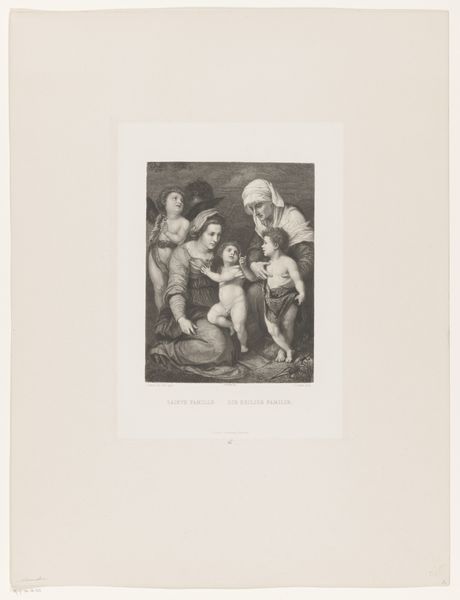
Dimensions: height 561 mm, width 430 mm
Copyright: Rijks Museum: Open Domain
Curator: Before us is "Heilige Familie," or "Holy Family," an engraving created around 1835 by François Forster. It presents a classic, devotional scene rendered in a highly skilled manner. Editor: My initial reaction is a sense of stillness. The subdued grayscale and carefully etched lines create a tableau frozen in time, heavy with the weight of tradition. You can see so much meticulous labor in the fine detailing, it really gives you a sense of the artist’s intense commitment to replicating the subject. Curator: Absolutely. When viewed through a critical lens, we must consider this image within its historical context. The idealization of family, particularly motherhood, as presented here, reinforces societal norms and power structures of the 19th century. The image caters to and perpetuates a patriarchal system. Editor: I see that connection too, in how the material process reinforces it. Engravings like these were widely disseminated through printmaking—allowing standardized ideals of religious devotion and family life to circulate broadly. What kind of choices related to the actual making of the engraving, do you think, reinforced the values or belief system? Curator: The composition is interesting. There’s this very central Madonna figure framed on either side by more elderly, traditionally paternal figures. This positions her within a defined power dynamic; this can suggest how women were symbolically seen during this period in relation to paternal power. Editor: And those somber expressions! The subdued tones heighten the emotional gravity—that combination of ink, paper and human labor resulting in an object designed to instill specific ideas. Did you happen to study other art that employs grayscale at some point in the early and mid 19th-century and reach to a conclusion? Curator: It’s more complex than meets the eye. But these explorations, particularly around representation, remain ever important as we confront biases present within art historical narratives. Editor: This print really makes me wonder about the economic systems that enabled its production. I see it as a beautiful example of highly-skilled labor utilized to spread particular value narratives throughout the marketplace and ultimately within a system of mass consumption.
Comments
No comments
Be the first to comment and join the conversation on the ultimate creative platform.
